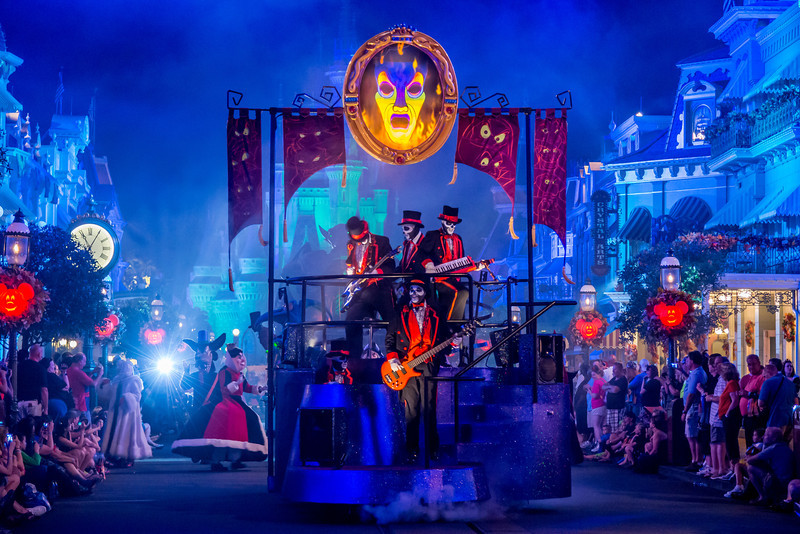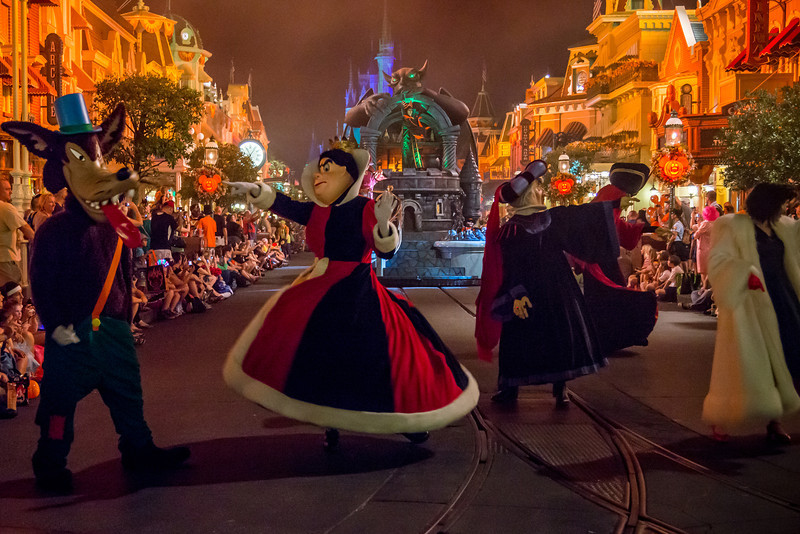My advice - if you are just starting out trying to get into dark ride photography, be prepared to get in over your head very, very quickly from a complexity and cost perspective.
It is far more complicated than any type of vacation photography you can imagine due to:
- Minimal available light thus requiring fast (expensive) lenses and/or high ISO (expensive bodies)
- Variable shutter speeds due to the motion of the ride in question or the subject you are trying to capture
- Subject material that pushes the boundaries of dynamic range in that you need to expose for things that are in low light; but, often it's the bright spot lights that will cause overexposure due to dymanic range being compromised at high ISO. You really need to watch your color histograms as each channel can take a beating on different rides.
- Willingness to take advantage of spot metering and moving the focus point around to get a good exposure
- Great understanding of post processing to get the most out of every exposure (shooting in RAW helps signficantly)
and finally, a couple things that people seem to discount when considering if they want to start down the dark ride photography path
- A predictive understanding of each ride to know what is coming up and how to adjust your shutter speed, ISO, or spot metering to be prepared before the moment you are trying to capture is before you. This means you need many circuits on an attraction to get proficient at taking photos on it.
- Being prepared to discard MANY, MANY trash photos in order to get one keeper
With all that being said, time is money on vacation. If you are a frequent Disney visitor and don't mind sacrificing circuits on your favorite attractions as a passager and strictly enjoy the ride, you can dive into dark ride photography.
One trick that I've become a firm believer in over the course of the last several
Disney vacations is to do much research in advance to determine the max ISO your camera can do before it stops applying analog gain to boost ISO and relies on digital gain. It is at this point, dymanic range begins to fall off considerably. At this cutoff point, it is better to shoot below this threshold and then use exposure boosting in post production as it gives much cleaner results and doesn't risk losing any highlight detail.
For my current workhorse camera, the Nikon D800e, this point is ISO 1600. Beyond this, it's all digital boosting which can be done better in post production.
Be advised that if you are serious about anything in photography, look at it all as a long term investment. Spend your money on buying pieces and parts that you can use over the long haul and won't need to replace. For example, don't buy a "faster" lens than your kit lens and get a f/2.8 only to turn around and buy an f/1.8 and then realize you need the most light possible and buy an f/1.4. Make smart choices more slowly. This always means buying better lenses and accesories (like tripods) that you can reuse forever than spending a ton on a state of the art body that loses half its value in a couple of years.




















